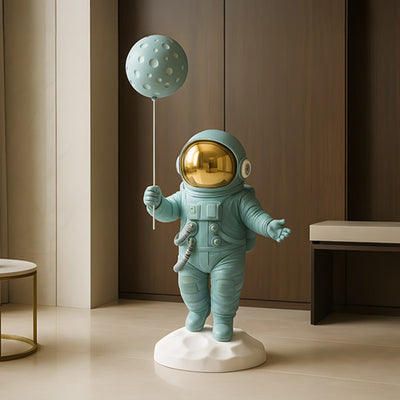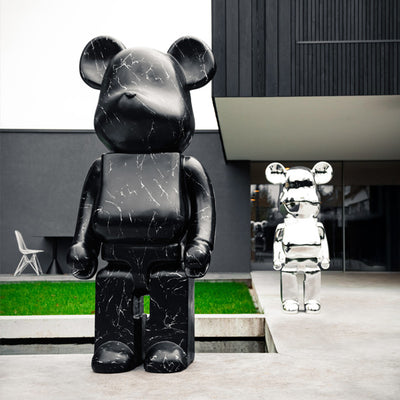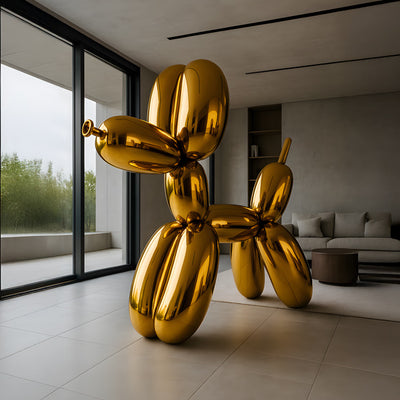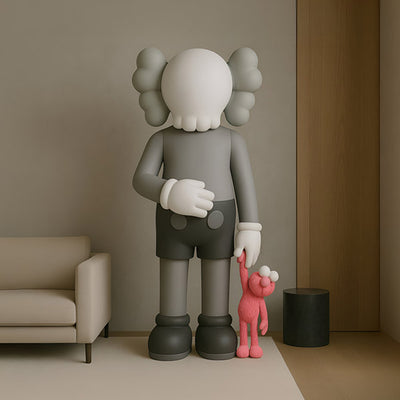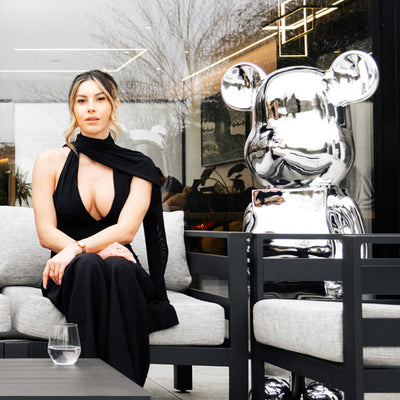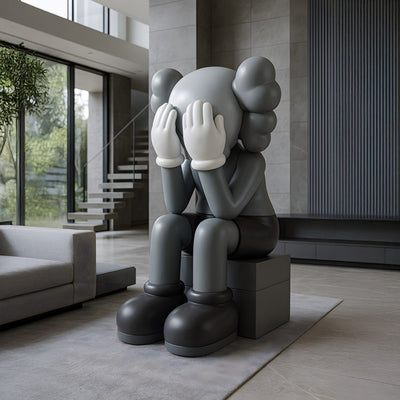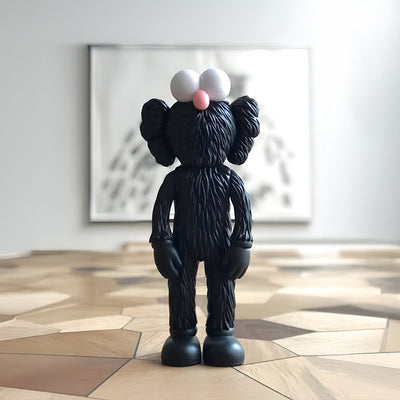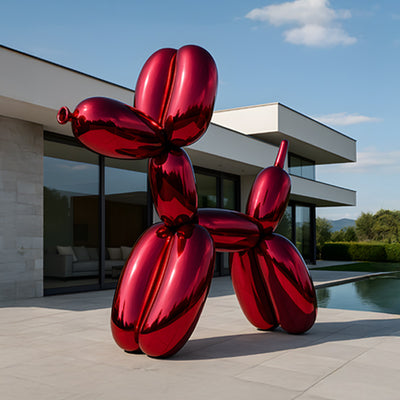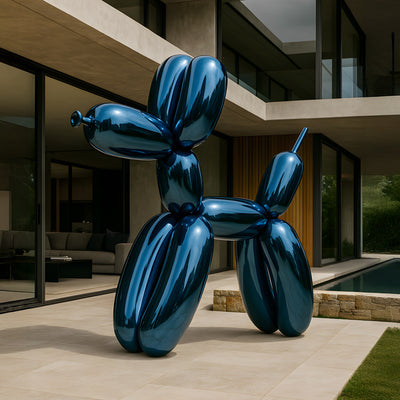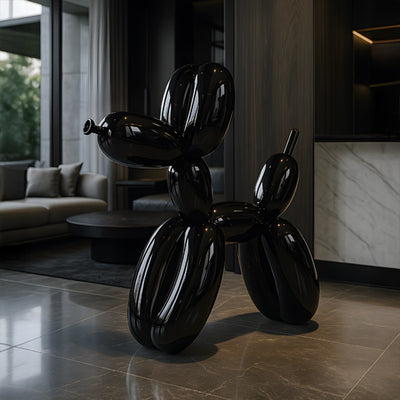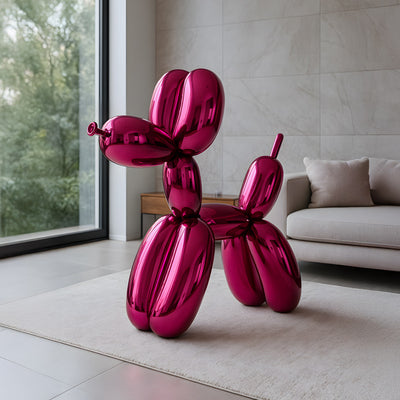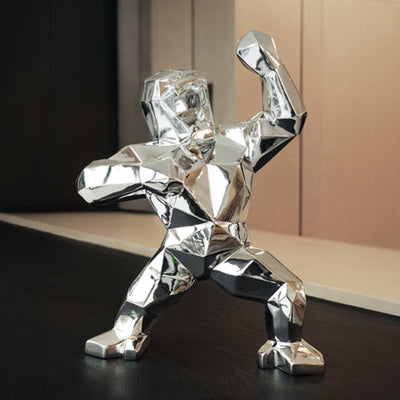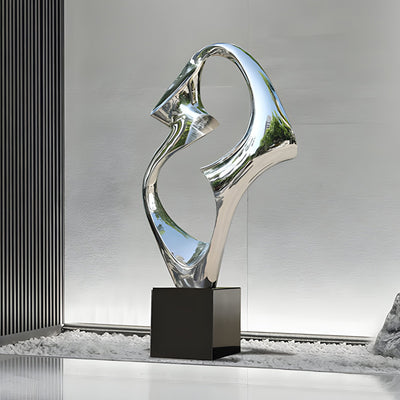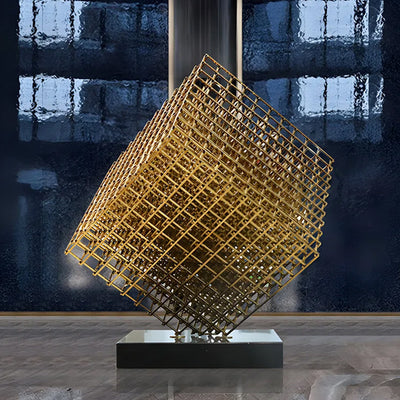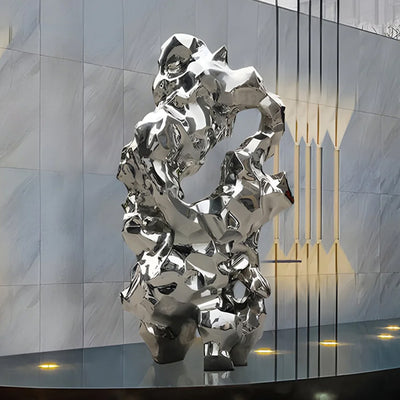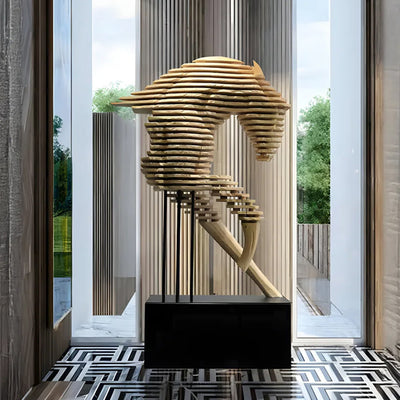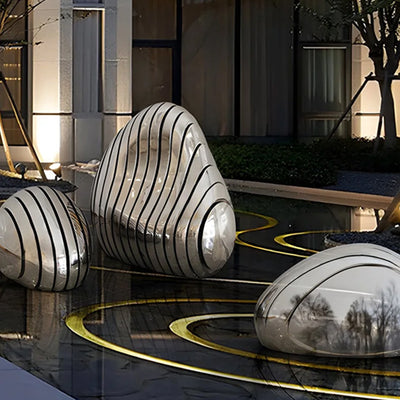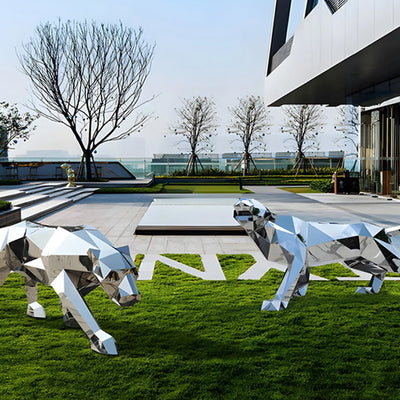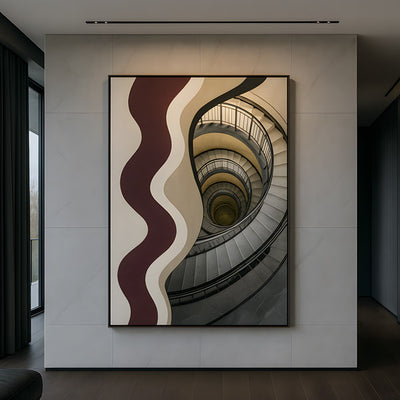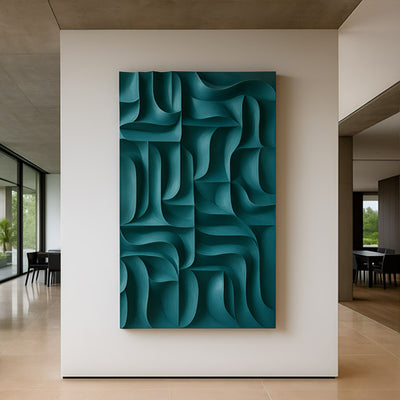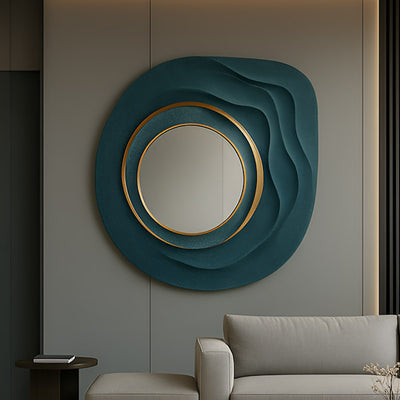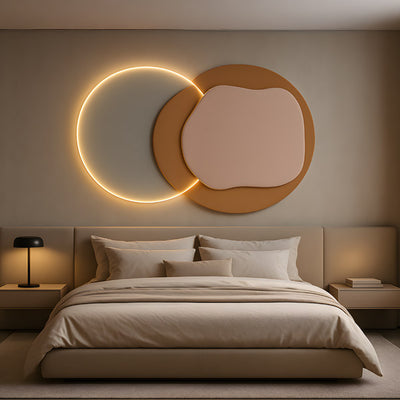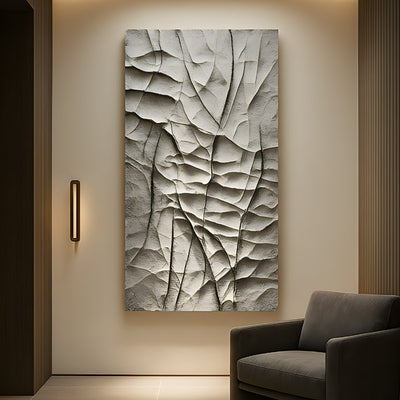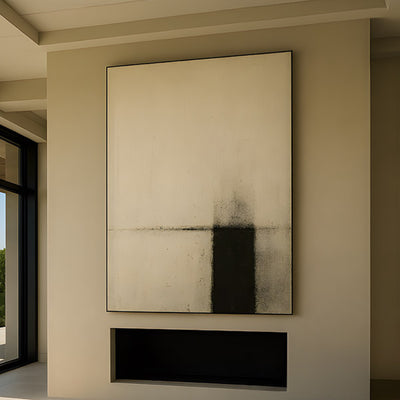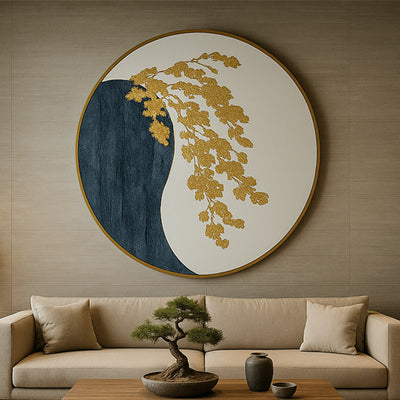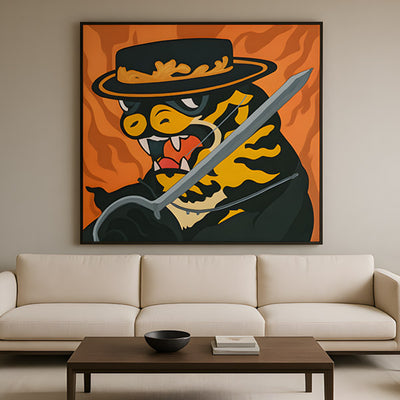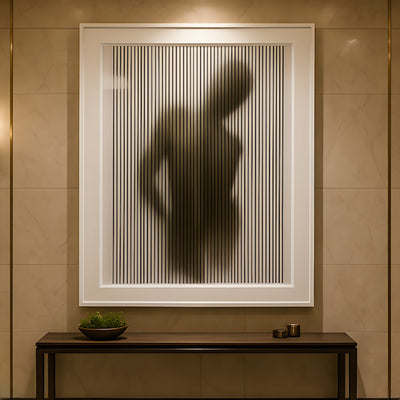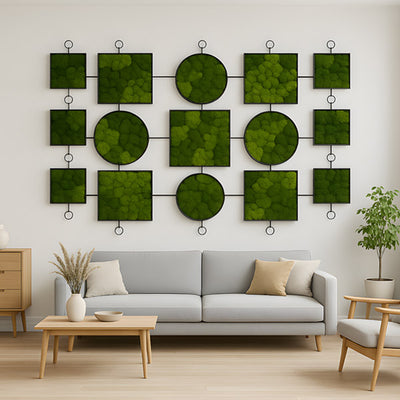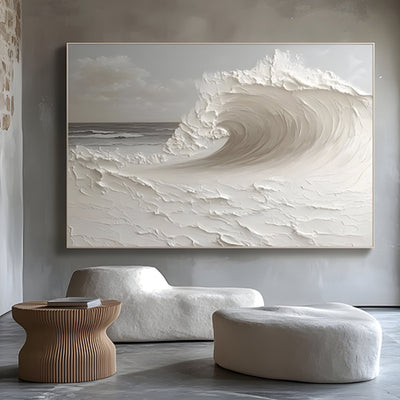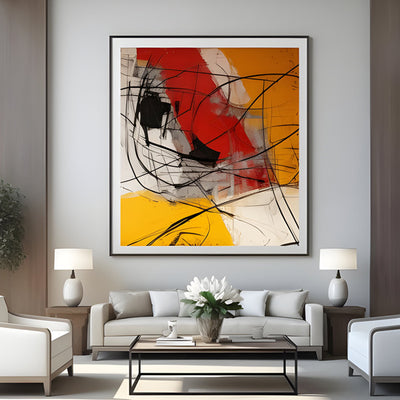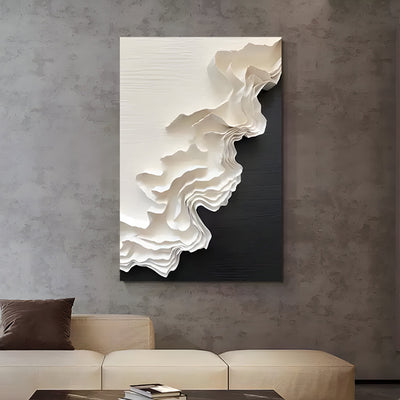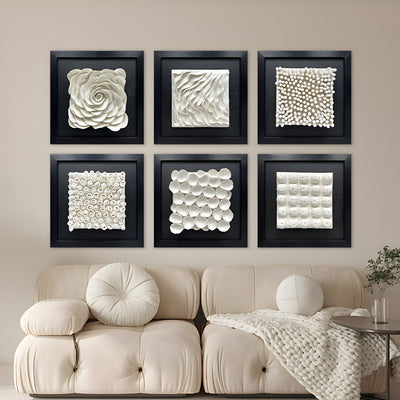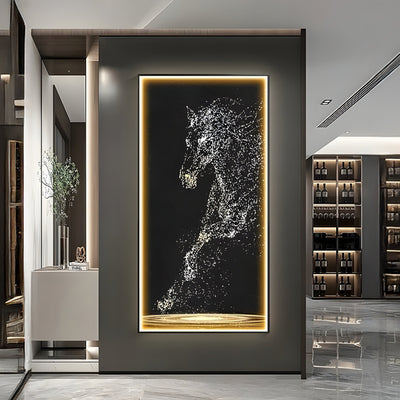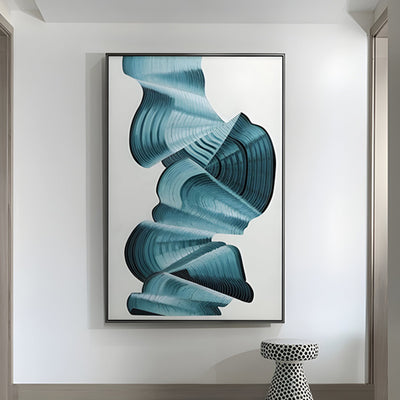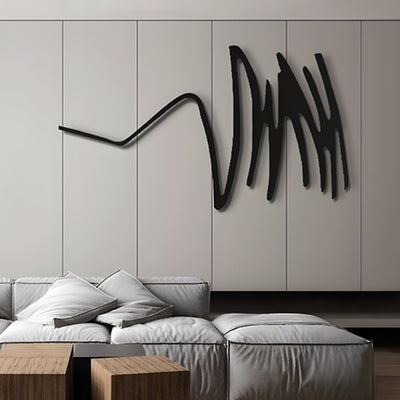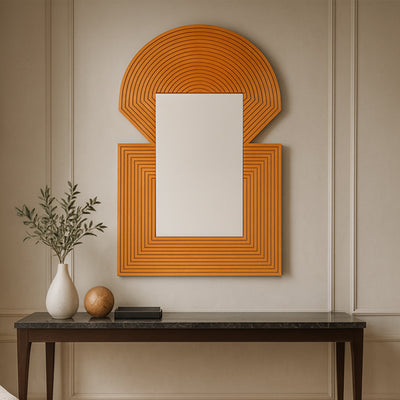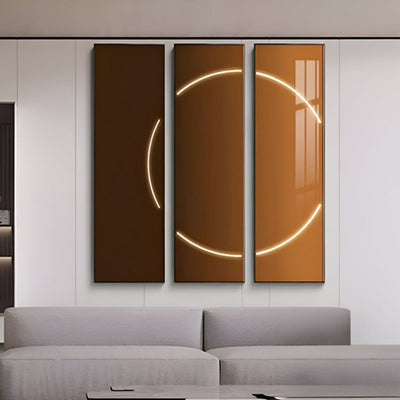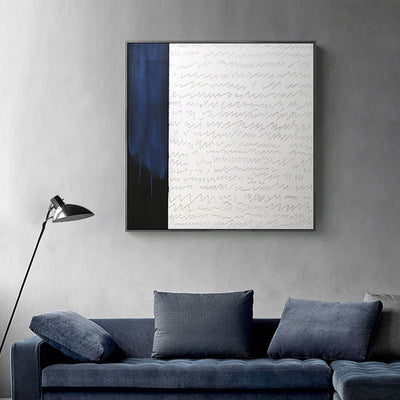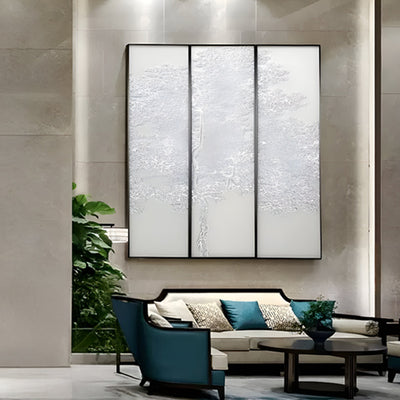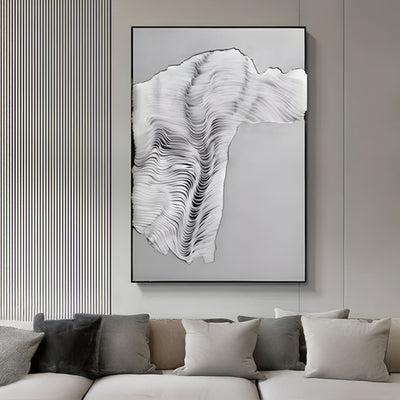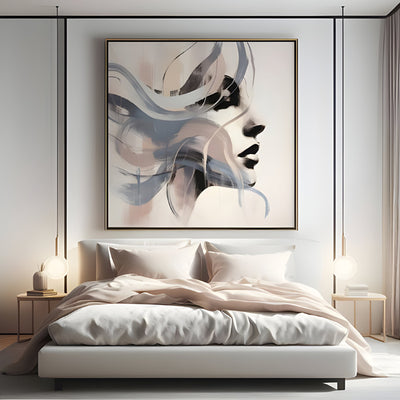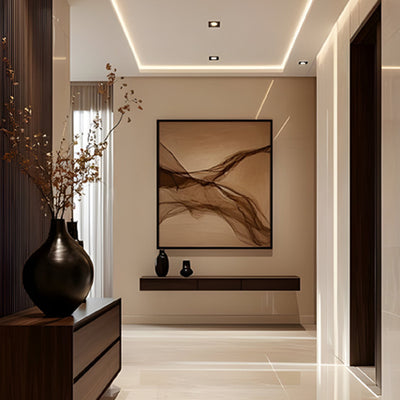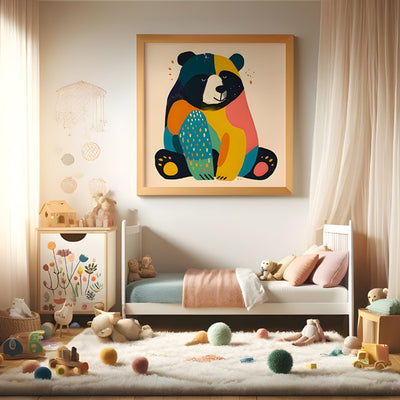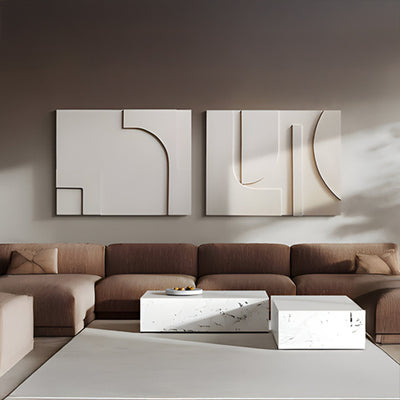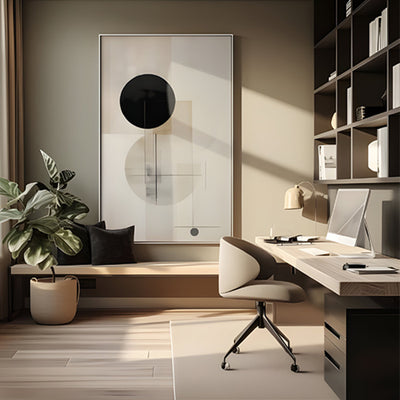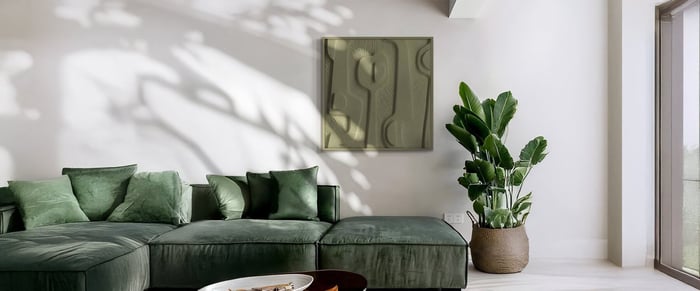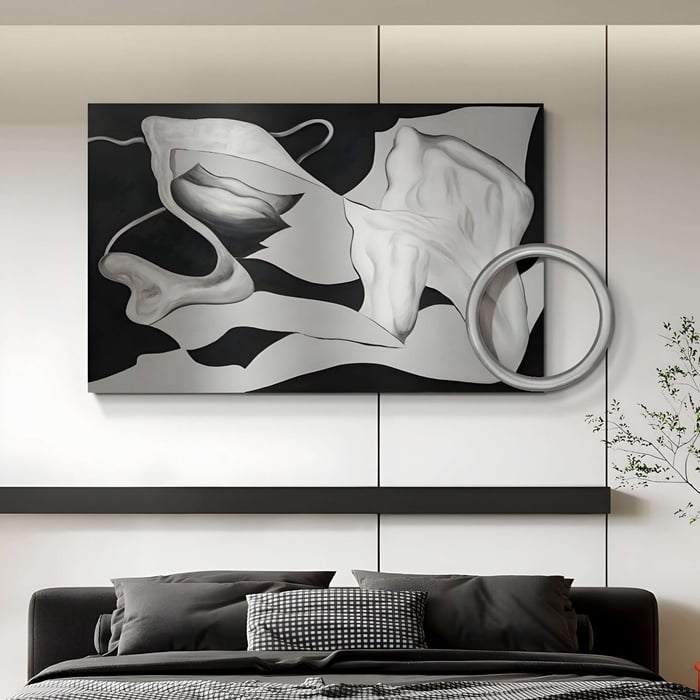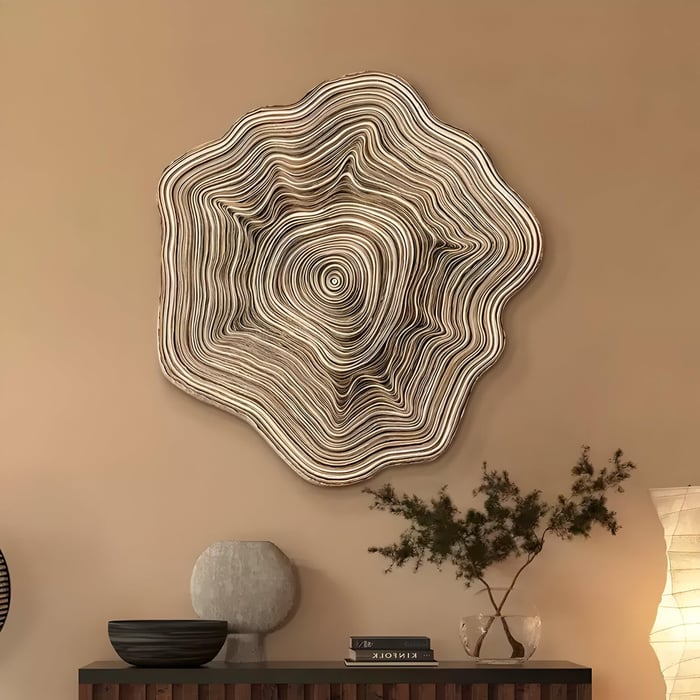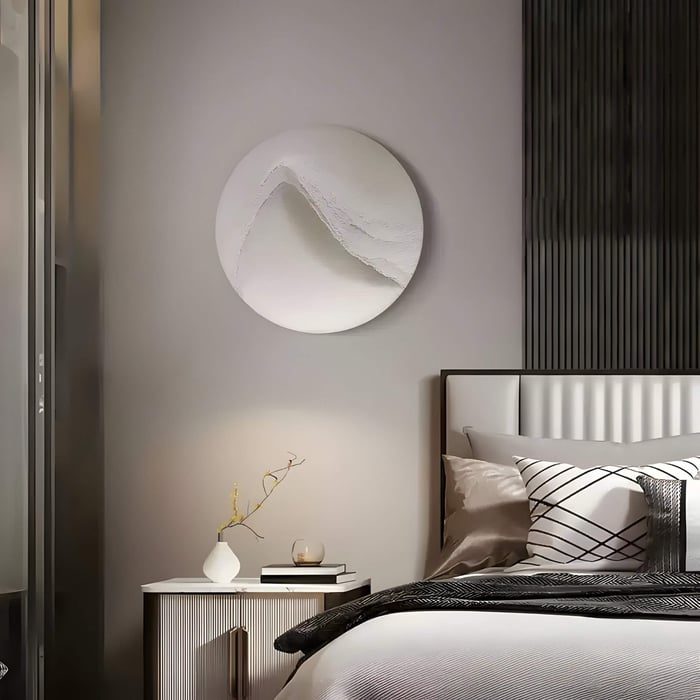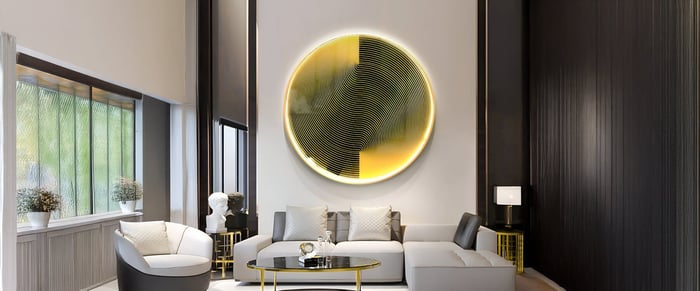Wabi-Sabi Art is a design approach that finds beauty in the imperfect and transient aspects of life. Rooted in Japanese philosophy, it celebrates the natural evolution of materials and the unique charm of imperfection. This aesthetic is ideal for creating a relaxed, organic home where every piece tells a story of authenticity. Whether displayed as a striking piece in a living room, bedroom art that soothes, or subtle accents in a hallway, wabi-sabi art transforms spaces into serene sanctuaries. In this guide, we explore the philosophy behind this art form, its key principles, and offer practical tips along with inspirational ideas to help you bring this calming, rustic design into your home.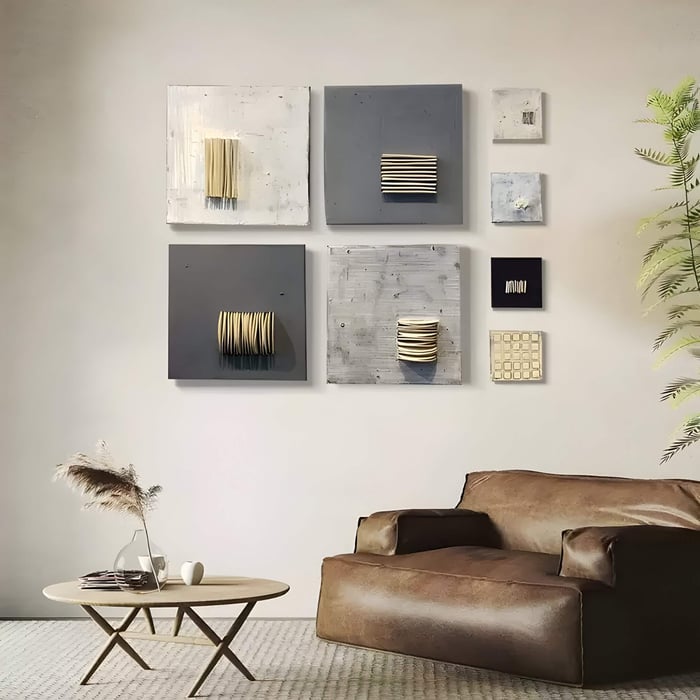
Understanding Wabi Sabi Art
Wabi-Sabi Art embraces the beauty of imperfection and impermanence. This philosophy, deeply embedded in Japanese culture, prioritises simplicity and authenticity over perfection.
Definition and Philosophy
At its simplest, Wabi Sabi art is an appreciation for the imperfect. It involves recognising that rough edges, uneven textures, and minor flaws contribute to a piece’s character. This mindset is not about settling for mediocrity but rather honouring the authenticity of the natural world. The focus is on natural beauty - the grain of wood, the patina on metal, or the soft textures of a hand-painted canvas, all elements that evoke a sense of rustic design and organic art.
Cultural and Historical Background
The ethos finds its roots in traditional Japanese culture, where art and design were deeply intertwined with nature. Japanese tea ceremonies and crafts celebrated the natural, weathered beauty of objects that had gracefully aged. Over time, artisans refined techniques that emphasised the inherent qualities of natural materials, whether through wood carvings, ceramic pieces, or canvas art works, to capture fleeting moments with authenticity and simplicity. This cultural heritage has influenced contemporary minimalism and Zen aesthetics across the globe, creating a legacy that continues to shape serene interiors and calming decor today.
Key Principles of Wabi Sabi
Several essential elements define the wabi-sabi approach and distinguish it from other design movements.
Embracing Imperfection
A central tenet of this approach is the acceptance of imperfections. Instead of striving for symmetry and flawless execution, wabi-sabi values irregularities as a source of beauty. Whether it’s a slightly off-centre brushstroke in a painting or an asymmetrical design in a sculpture, these ‘flaws’ add authenticity and depth to the piece. In the context of imperfect art, each piece tells a unique story that celebrates life’s natural inconsistencies.
Simplicity and Minimalism
Simplicity is key in wabi-sabi. This aesthetic avoids unnecessary embellishments and focuses on the essentials. In practical terms, this means favouring uncluttered spaces and clean lines. The minimalist approach extends to colour, where neutral palettes and soft contrasts dominate. This principle is evident in the work of many artists and designers who favour contemporary minimalism in their creations, resulting in serene interiors that exude calm.
Natural and Organic Materials
Using raw, unpolished materials is another hallmark of wabi-sabi aesthetics. Wood, stone, and other natural substances often feature in these works, each chosen for its unique texture and history. The utilisation of organic art techniques helps to bring out the inherent qualities of these materials. The result is decorative art that not only looks genuine but also connects the viewer to the natural world - a principle that fosters both mindful living and a respect for natural beauty.
Inspiring Wabi-Sabi Art Ideas and Applications
Wabi-sabi art offers endless creative possibilities for transforming your home into a serene sanctuary. Here are several ideas to spark your imagination:
Gallery Walls and Curated Displays
Create a cohesive gallery wall featuring a mix of Wabi-Sabi pieces. Arrange works of different sizes and media to form a unified yet eclectic display. This approach not only becomes a focal point in your space but also tells a visual story of embracing imperfection. Consider alternating between Wabi-sabi paintings and handcrafted sculptures to introduce variety while maintaining a common theme.
Mixed Media and Textural Collages
Experiment with combining different materials and textures to produce layered art installations. For example, blend elements of textural art with organic materials to create a piece that feels both contemporary and raw. The contrast between polished and natural finishes can add depth to your decor, making a simple wall an engaging conversation piece.
Outdoor and Entryway Inspirations
Extend the Wabi-Sabi aesthetic beyond indoor spaces. A thoughtfully placed piece in your entryway or on an outdoor wall can set a warm, inviting tone. Consider weather-resistant artworks or rustic pieces that echo natural decay and the beauty of aging. These installations create a natural first impression and seamlessly connect your interior and exterior environments.
DIY Wabi-Sabi Projects
For a hands-on approach, try creating your own wabi-sabi-inspired decor. Simple projects like distressing an old piece of furniture or painting a canvas with intentional imperfections can yield personalised artworks that capture the essence of this philosophy. DIY projects not only save money but also add a unique, heartfelt touch to your space, reflecting a commitment to mindful living.
Integrating Natural Imperfections
Celebrate the raw beauty found in everyday objects. Embrace and highlight natural flaws in furniture, accessories, or even architectural details. For instance, a cracked ceramic vase or a weathered wooden table can serve as a reminder of nature’s impermanence, adding character to your decor. This approach encourages you to see the beauty in the imperfect, aligning with the core values of wabi-sabi.
Blending with Modern Minimalism
The simplicity of contemporary minimalism pairs beautifully with the understated charm of wabi-sabi. Use clean, uncluttered lines to allow the natural imperfections of your art to stand out. This balanced combination results in serene interiors that feel both modern and timeless. Whether in a living room or as part of your bedroom art, this synergy enhances the overall aesthetic without overpowering the space.
Transforming Living and Bedroom Spaces
Consider using wabi-sabi art to create a warm, organic sanctuary in key areas of your home. In living rooms, a large, thoughtfully chosen piece can serve as a conversation starter, while in bedrooms, softer, more subtle artworks can promote rest and mindfulness. By incorporating these elements, you create environments that are not only visually appealing but also foster a sense of calm and well-being.
The Emotional and Practical Impact of Wabi-Sabi Art
Beyond its aesthetic value, these art contributes significantly to the overall wellbeing of a space and its inhabitants.
Fostering Calm and Mindfulness
By embracing imperfection, wabi-sabi artworks creates an environment that naturally reduces stress. The unpretentious, understated nature of these pieces invites reflection and quiet contemplation, turning everyday spaces into sanctuaries for the mind. This mindful approach is especially beneficial in our fast-paced world, offering a gentle reminder to slow down and appreciate the present moment.
Enhancing Functionality and Aesthetic Appeal
Wabi-sabi art serves a dual purpose: it beautifies spaces while also enhancing their functionality. Its minimalist design and natural elements ensure that the decor remains uncluttered, creating serene, balanced interiors. Whether used as a focal point in hallway art, as calming bedroom art, or as a statement piece in living room art, these works add both style and substance to your home, making everyday spaces more inviting.
Final Reflections: Redefine Your Space with Wabi-Sabi Art
Wabi-sabi art offers a refreshing perspective that celebrates imperfection and the transient beauty of natural elements. By integrating this approach into your decor, you can create a home environment that feels both relaxed and organically beautiful. This style, rooted in Japanese philosophy, encourages simplicity, mindful living, and a deep appreciation for the natural world.
Whether you choose to adorn your walls with subtle paintings, display a handcrafted sculpture that speaks of rustic design, or incorporate a piece of contemporary minimalism into your space, the essence of this art form remains the same: to find beauty in what is naturally imperfect.
If you’re ready to transform your living space into a haven of calm and authenticity, explore curated wabi-sabi art collections at Giant Sculptures. Discover pieces that capture the natural allure of imperfection and help you create serene interiors that promote a mindful, balanced lifestyle.
